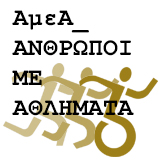

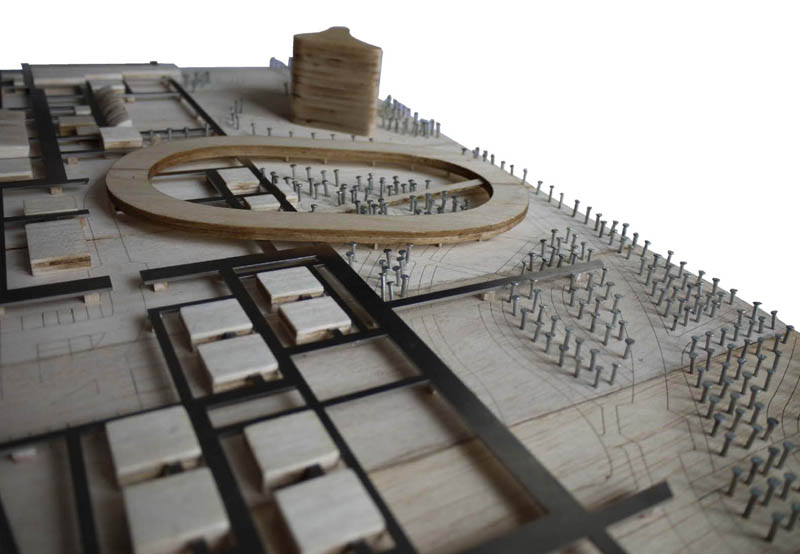

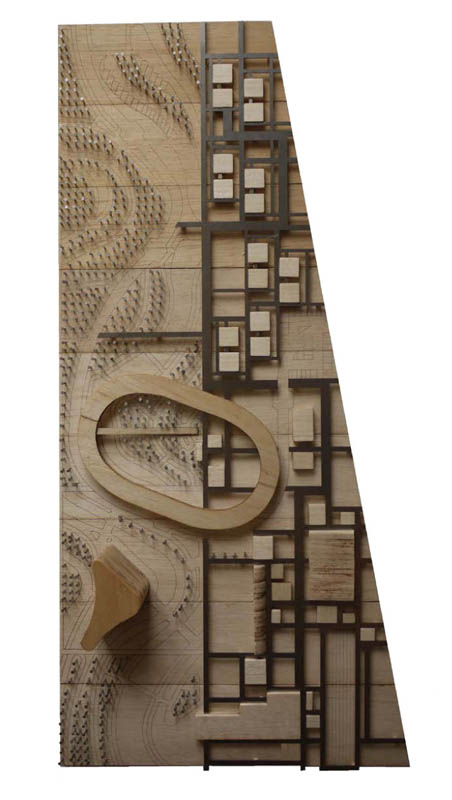

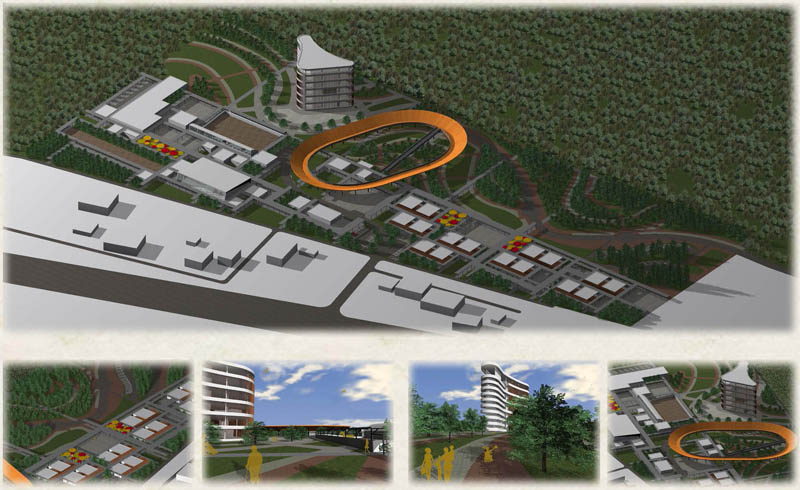



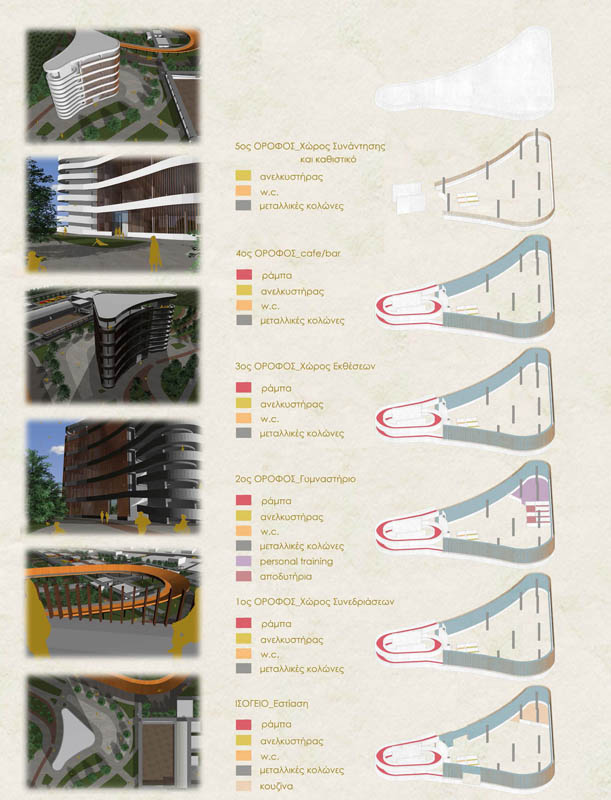

This thesis entitled "People in Sports" presents the design of Paralympic Training Centre in Limassol Cyprus. The town and the country in general, are at the heart of visits as regards the preparation of athletes for the various worldwide sporting events. The main reason for that are the temperate climate, as well as the sunshine. From our side, we wanted to address in particular the design of a training center, specially designed for people with disabilities. Wanting to achieve a form of cooperation and interaction with the town, some sports are hosted on existing sports venues. In this way, in our plot, there are mainly venues for riding, fencing, archery, shooting, cycling, hospitality, first aid and options for food consumption.
People with disabilities are people too. People with mobility problems, simple people, who move on a wheel chair. People with problems regarding their vision, people like everyone else who can see with the help of a white cane. People with hearing problems, simple every day people who can hear and communicate with others through sigh language. They are not different than anyone else, but due to their health problems, they have to satisfy their needs in a different way. However, in order to achieve this, they have to have environmental help. More or less, we all have the right to move to private and public spaces with comfort and safety. Additionally, we all look for understanding, respect and love from the people around us.
Supervisor: Manolidis Kostas
Reference Number: 538


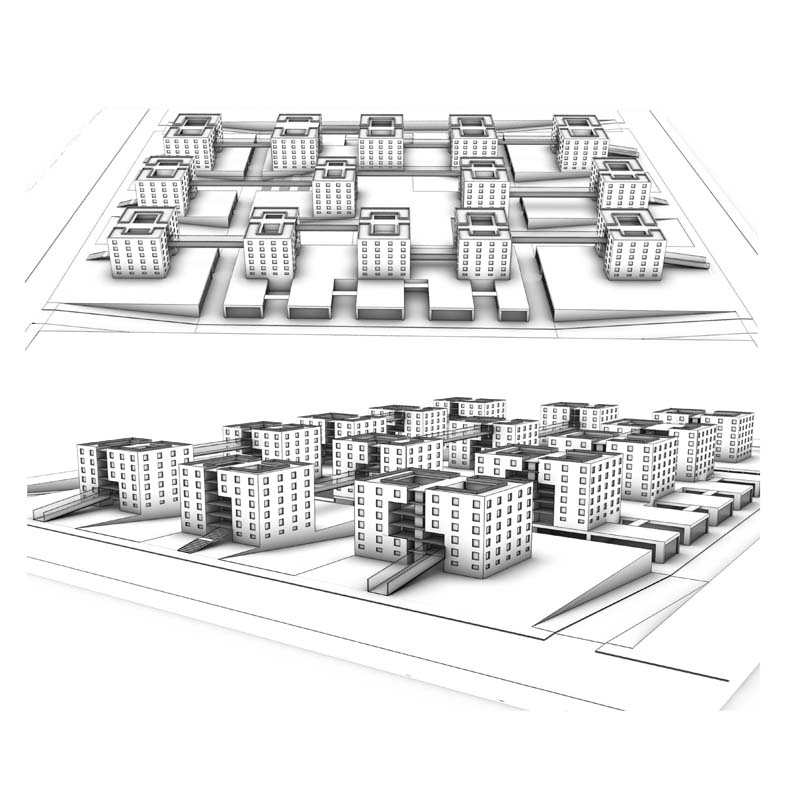

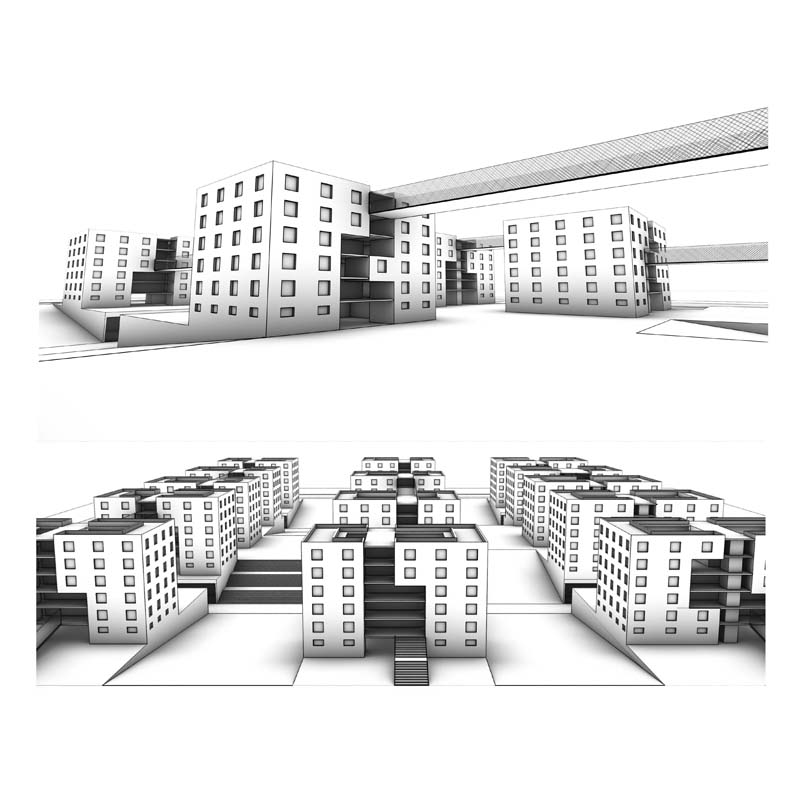

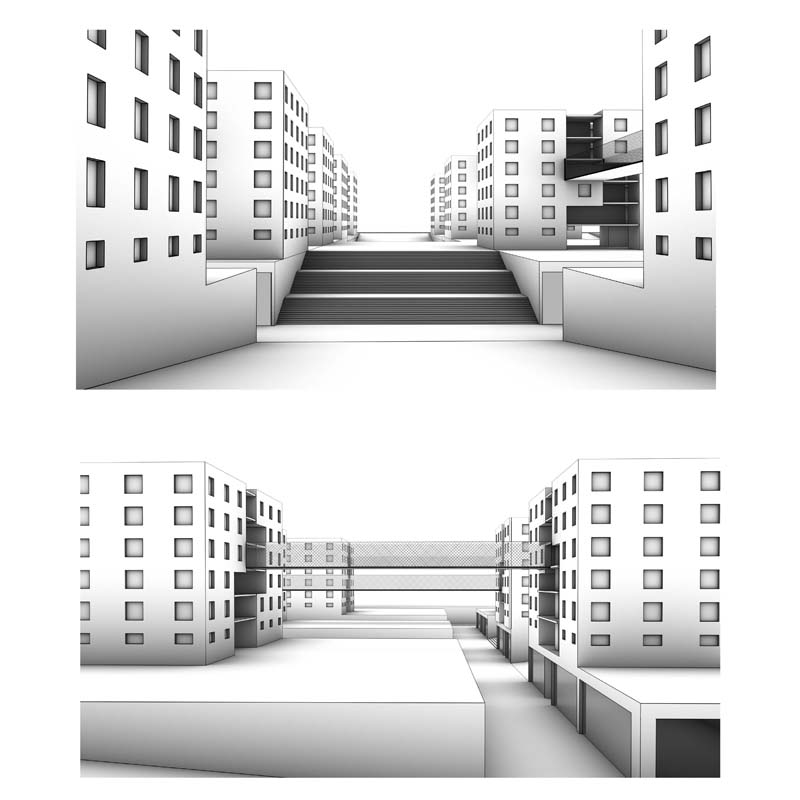

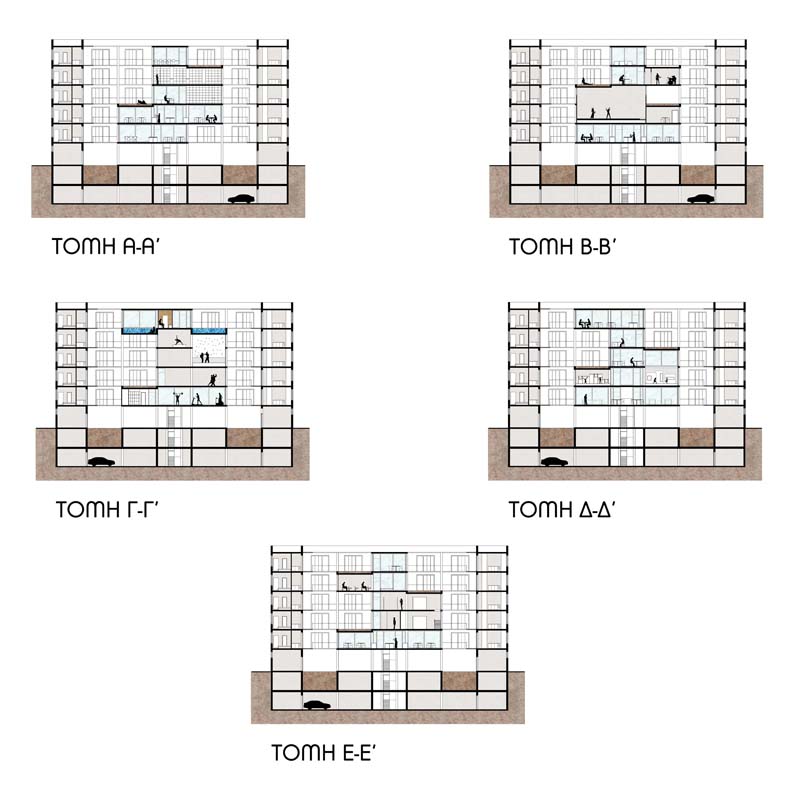



The area of Eleonas is situated on the southwest border of the city of Athens. Until the second half of the 20th century Eleonas was mainly a rural area. By the end of the civil war, however, small industrial units started to take over, making the area the industrial border of Athens that developed along Kifisos. Only a small part of the area actually has a housing zone.
During the post dictatorship period due to the industrialization of Eleonas the area suffered from high levels of pollution. That reason forced the industries either to shut down or to move to other areas leaving in their place the industries’ abandoned shells.
Since then Eleonas has been in the center of redevelopment plans while it is next to the center of Athens, has a very different morphology and allows the development of different planning models.
For the reasons above this area was chosen and more specifically the plot of Athens’ paper industry "Softex" along Iera Odos street.
In our intervention we chose not to keep any of the existing buildings, but to go along with the formation of a new urban model.
Our goal is to produce a development model which overcomes the dominant conception of the constitution of the residence area (private factor see loans banks), but also criticizes the standard of social housing of modernism. For this reason in our urban model it is crucial to set up production sites where high technology will be used.
Finally, the housing unit consist of the main Private spaces we find in a houses and would be quite similar to a hotel rooms. Essentially in the residential buildings we have a zone of private spaces outside which share a corridor. That connects the housing to the core of the building which consists of a network of public spaces.
Supervisor: Paniyiris Costis
Reference Number: 562




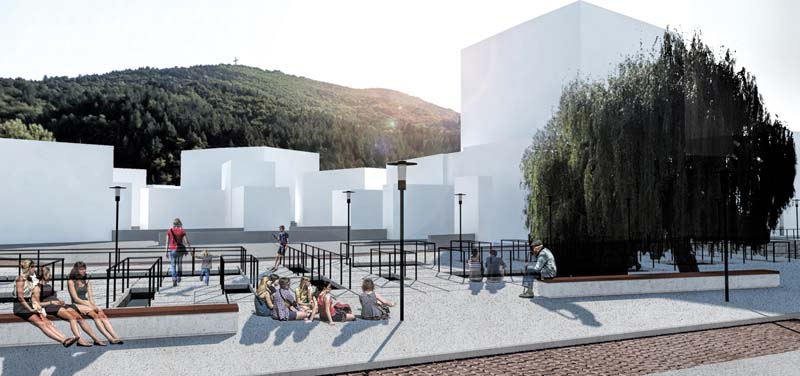

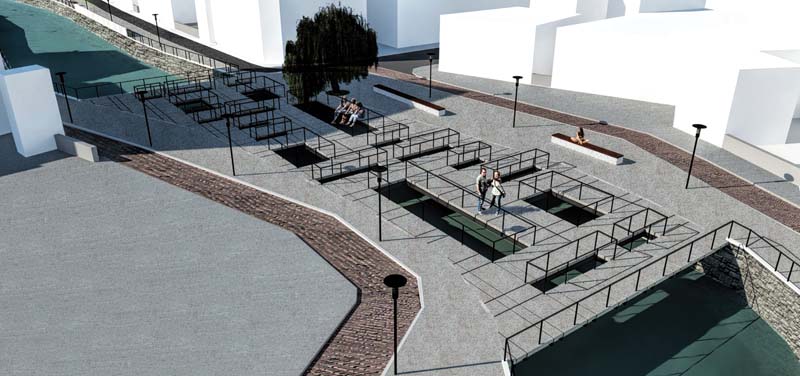

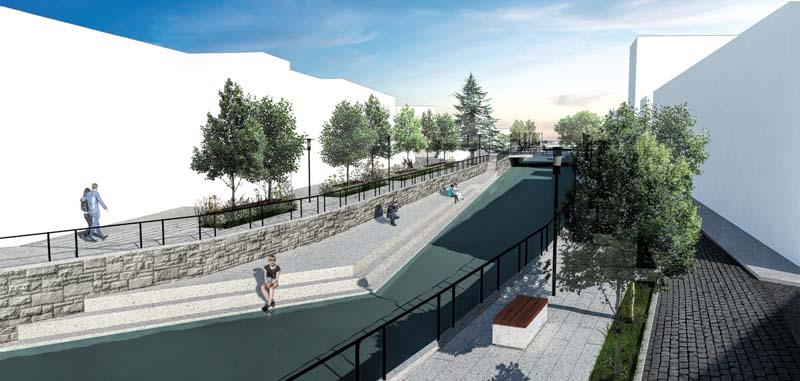



Aim of the proposal is the integration of the history of Florina city (as this is mapped on the building reserve of the city, which includes remains of buildings from past eras or buildings the use of which has shifted from their past equivalent) into city’s everyday use. For the accomplishment of this aim the regeneration of a part of the city is proposed.
Three current remains of buildings from the Ottoman era of the city are selected to be integrated into its quotidian use from citizens or visitors alike. The proposal is centered on a part of the riverbank around Sakoulevas river due to the fact that it is demarked by the aforementioned remains. Furthermore, the river is the only part of the city that has remained unchanged throughout historical changes that happened to the form of the city. For that, it is linked conceptually to the three remains which are just fragments of the city’s history. Finally, the selected part is not characterized from increased daily usage, something that creates a challenge to the design and completes the aim of the proposal.
Two routes are designed: one that links the three points of historical interest and one that is essentially a walk on the riverside. These routes intersect and overlap in order for the everyday nature of the walk to be linked to historic information.
The “historical” route is characterized by the design of the surrounding space of the remains so as for them to become prominent. The “pedestrian riverside walk” route is characterized by the reinforcement of the linear structure of the landscape for the creation of a course and the amplification of the experience of the user, their relation to the water, the landscape of the city and its natural surroundings.
Supervisor: Gavrilou Evelyn
Reference Number: 553


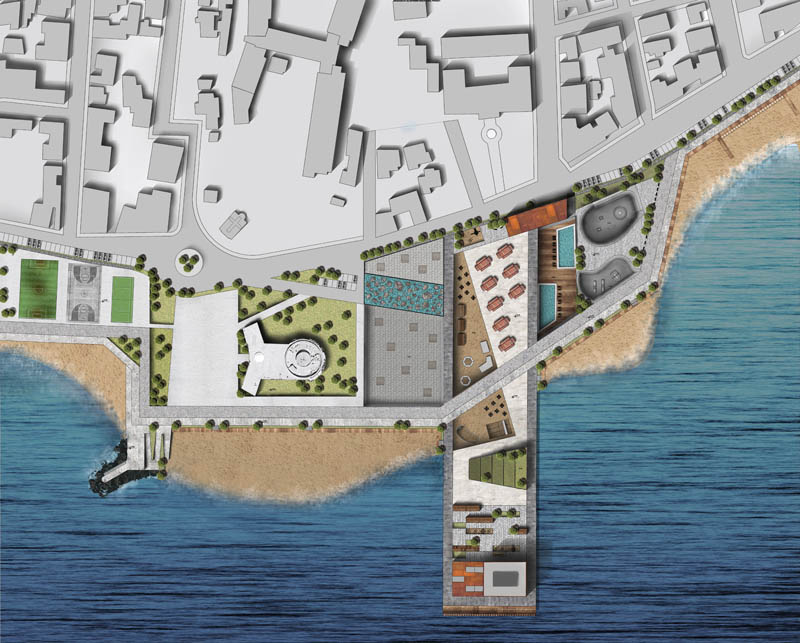





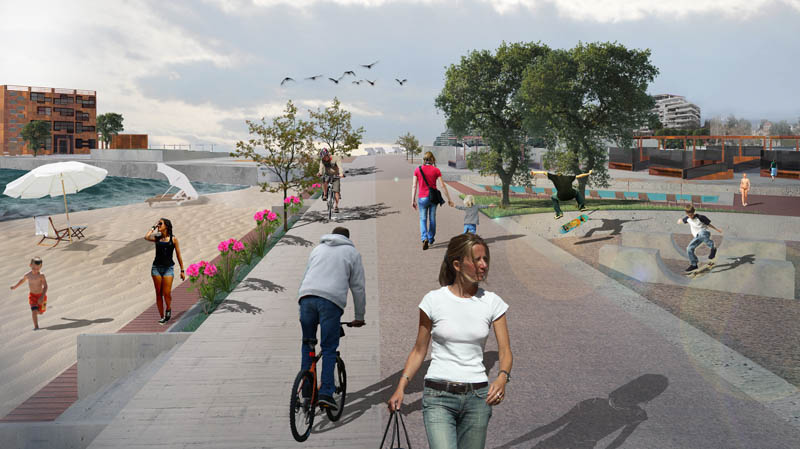



The town of Volos in its urban design, does not offer many options for its citizens for a calm walk, relaxing points and sport courts, which are free from wheeled traffic, as it seems to be in other European cities. Primarily such activities are offered only on the coastal front of the city where one can see residents walking, swimming in the sea during summer time, or enjoying relaxing moments, like the majors prefer to do and playing over the place, like the younger like to do.
The central idea of this thesis is the reconstruction and configuration of the coast front of Anauros. Looking more closely at the lines of movement that one can follow during his/her walk at the coastal front of the city of Volos, we understood that it’s separated into two categories. The first movement line extends from the building of the Port Authority to the breakwater part of the coast front, while the second one has the same starting point and extends to the church of St. Constantine. Rarely someone chooses to continue the walk until the hotel of Xenia or even till the beach of Anauros. Therefore, it’s consideredappropriatetocreate a junctionof activities on the coastal front of Anauros, so as to offer to the visitors the opportunity to continue their walk until this part of the city. Combining all the activities and the functions with both educational and entertaining character, we are willing to create an attraction that will appeal to every walker,regardless oftheir age. Our configuration is placed exactly infront of the Archaeological Museum and the old Hospital of Volos and extends from the hotel of Xenia to the beach of Anauros.
Supervisor: Gavrilou Evelyn
Reference Number: 532
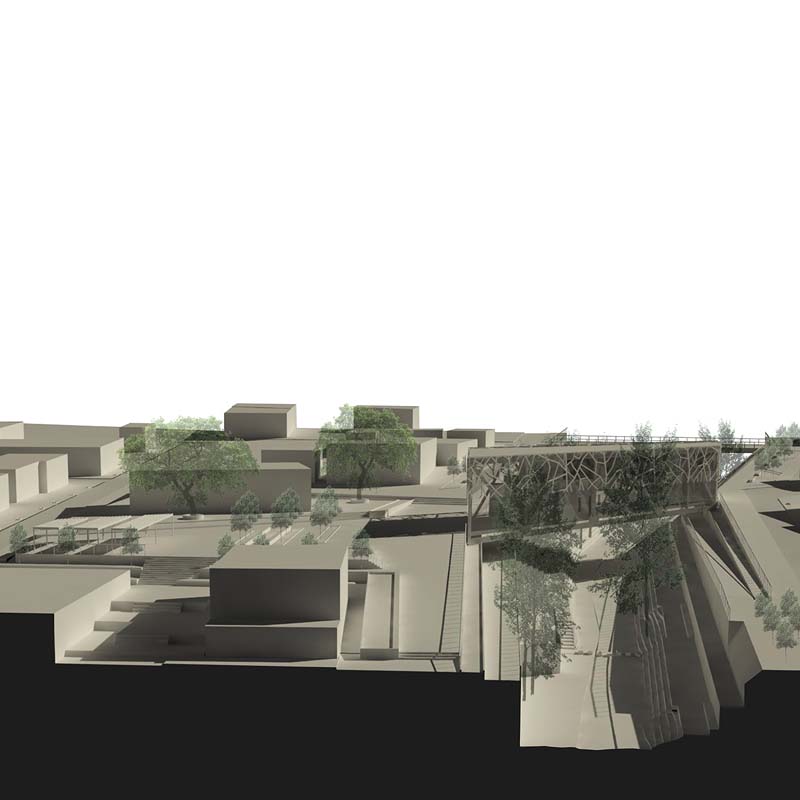

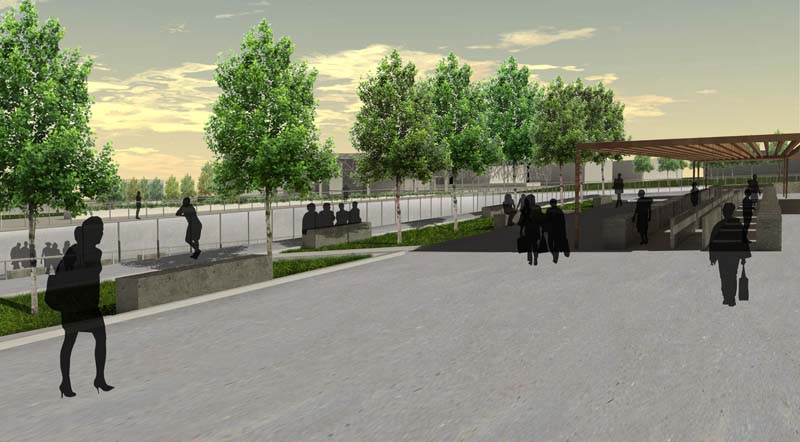

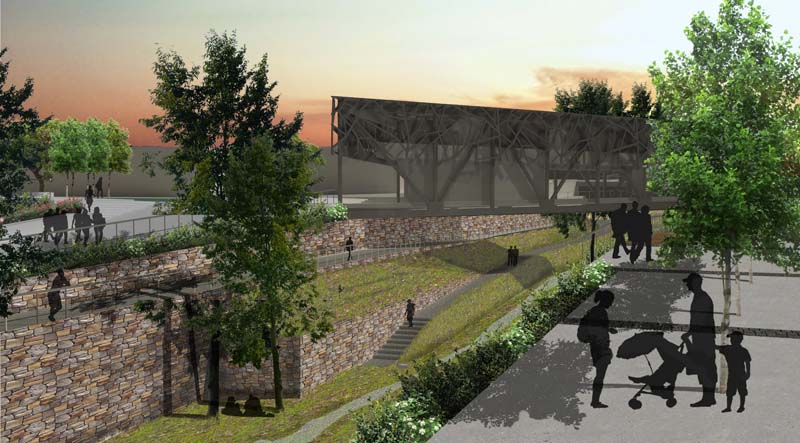

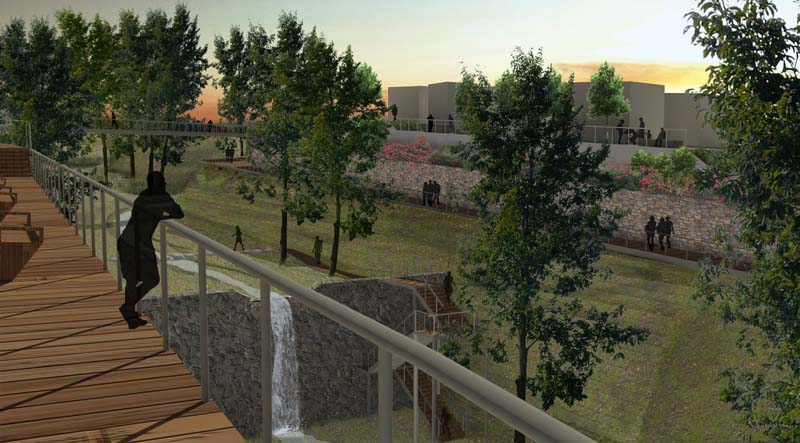

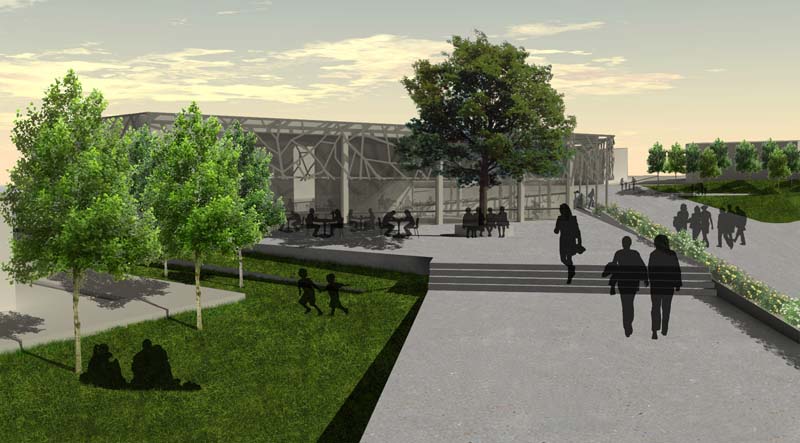



The extension without boundaries of the “concrete” urban centers over plains and rivers, has transformed these centers into non-viable areas for the residents, areas with predominant feeling of fear and anger when the residents are browsing them. During the last years, there is a strong effort to restore the natural element, aimed at creating a more peaceful, creative and sustainable environment for the human being.
This thesis is referring to a smaller scale city, the city of Sperchiada, Fthiotida, which did not escape the logic of the nature encroachment for more urban space, and is focusing on the “Grand Stream”, a stream that is running through the city, tearing it into two pieces, which led the past municipal authorities to infilling and therefor to its general encroachment. The goal is the emergence of the stream as a very vibrant part of the city and not its concealment, as well as the proof that the stream can work as a link between the two separated pieces. Thus, through a parallel and transverse system of lines and routes to the river bed, utilizing its different elevations, as well as the proposal for different uses such as: commercial (flea market), cultural (cultural center, open-air theater) and recreational (bars, baby playgrounds), there is an attempt to convert this hidden water spine of the city into a vibrant, green, natural spine in a coherent network that connects the public space in all directions, enhancing the standard of living of the inhabitants...
Supervisor: Trova Vasso
Reference Number: 563


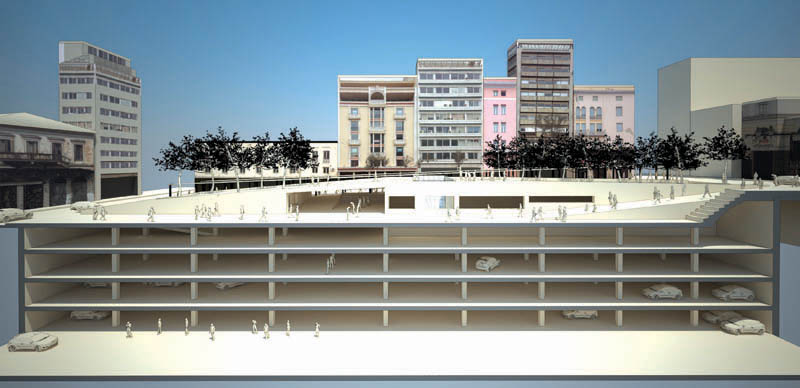

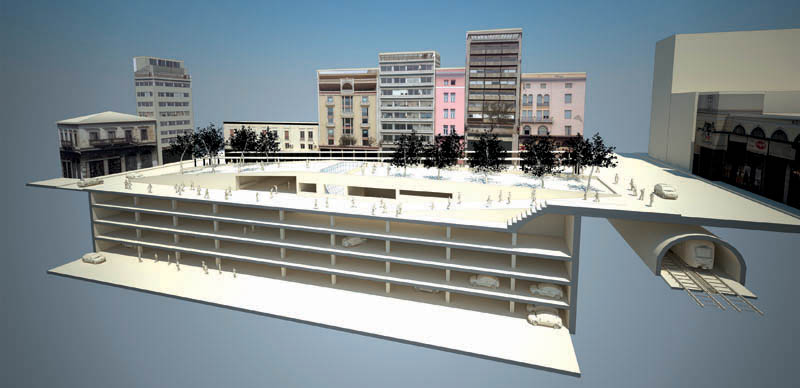

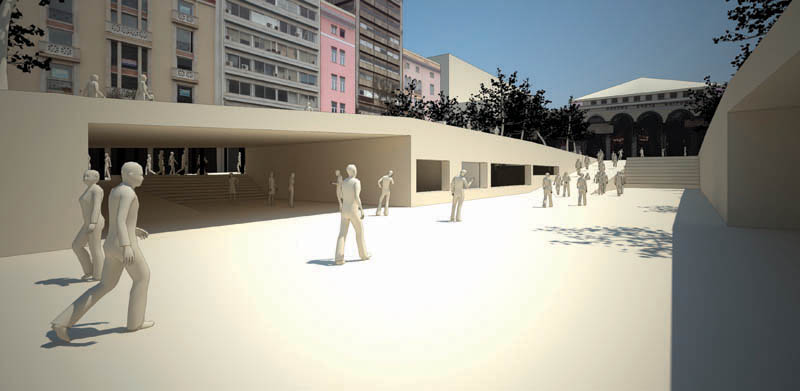

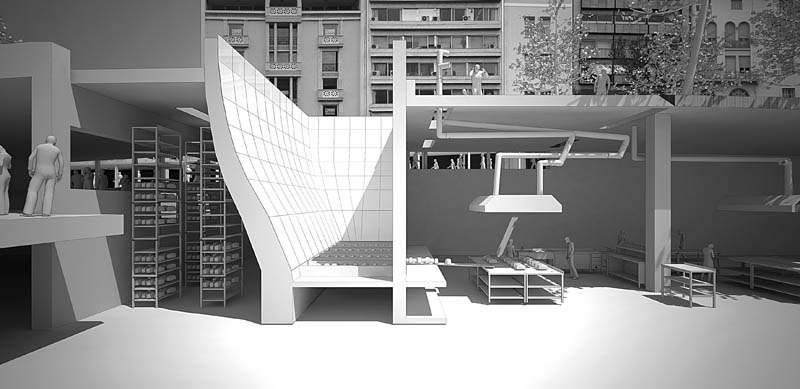

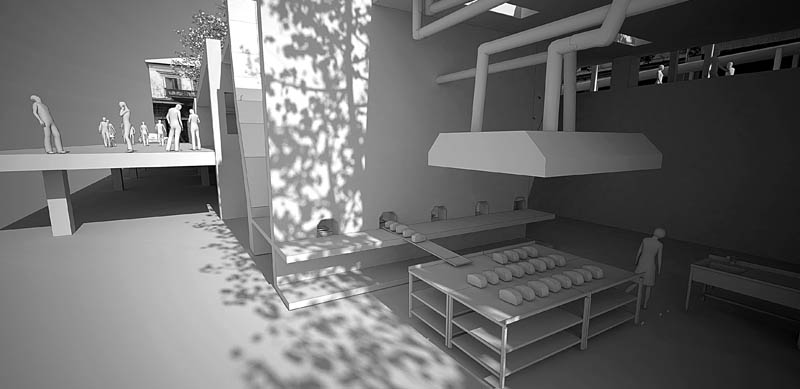

This thesis is a search for the ways with which the bread making process could get into the design and use of a public city square. If the bread, its smell, the labor of producing it, the “hearth” and the oven in which it is baked become a spectacle in the everyday lives of the plaza’s dwellers and passers-by, then we are investigating the changing relationships and movements on the site, as well as the way with which the proposed square will work as a system together with the adjoining central market of the city.
The chosen site to house the transmutations mentioned above is Varvakeios’ square, surrounded by the city roads Athinas, Aristogitonos, Sokratous and Armodiou, located in downtown Athens. We can already see the plaza and the whole area sheltering the greatest portion of the central city market’s uses, mainly the meat and fish market, as well as a great street market for vegetables and dairy, but there are no bakeries close enough to be included in this system, and one can only buy one’s bread in some very few small corner markets. What we are proposing is placing a bakery on and inside the square. Just like a cook who practices the art of “culinary economy”, I decided to form the new square out of the current square’s “leftovers”, by using most of the structural and functional elements already there, like the large underground parking space, but at the same time doing minor and hopefully important adjustments to house the new bakery, as well as improve the pedestrians’ flow of movement, use, experience and “taste” of the square.
Supervisor: Paniyiris Costis
Reference Number: 544
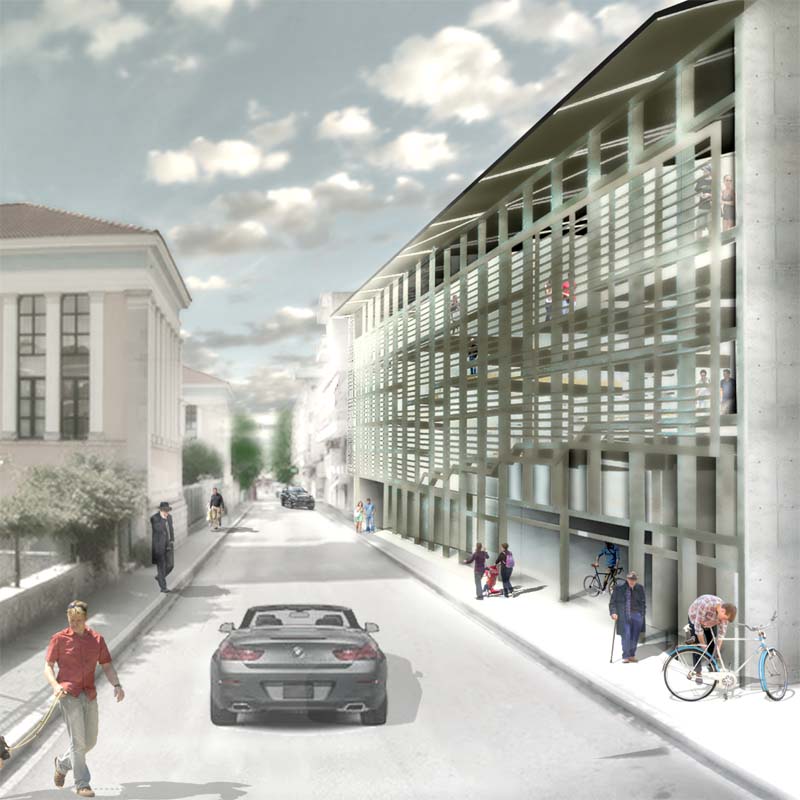

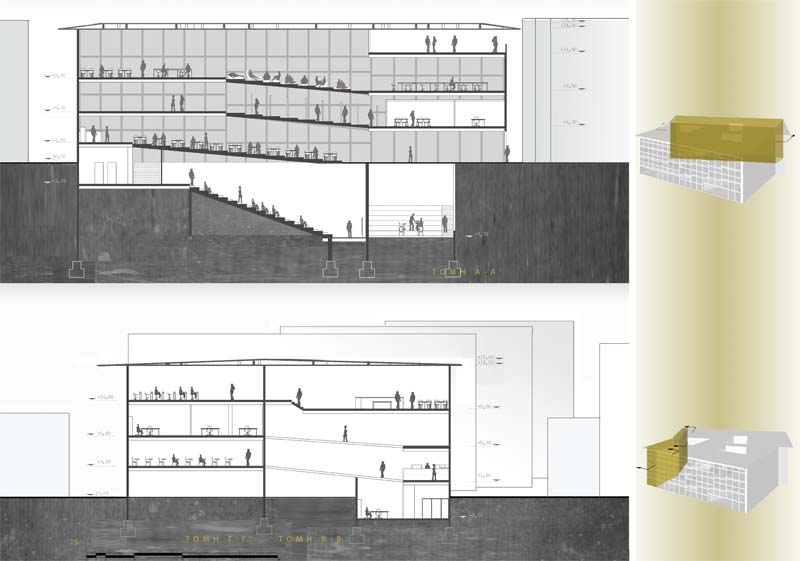

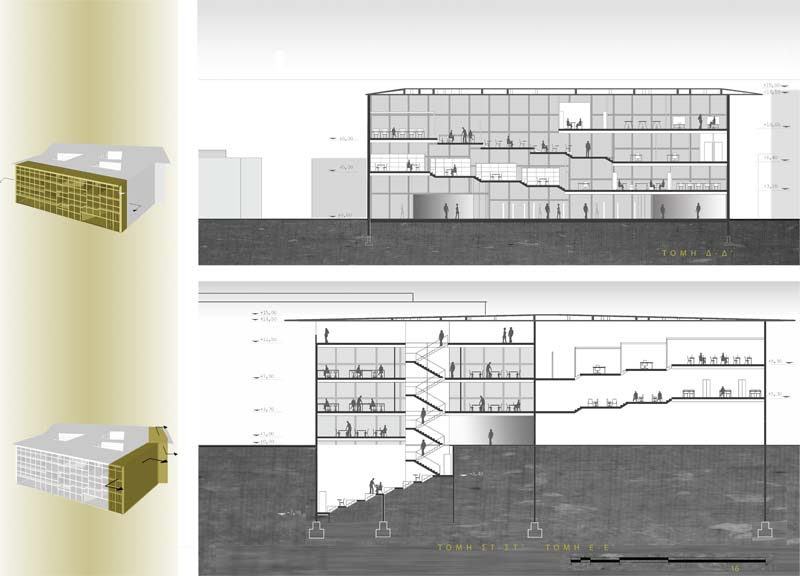



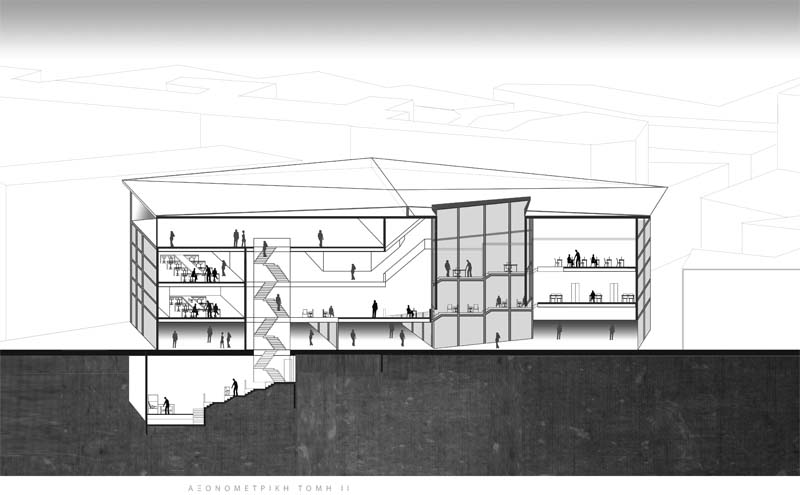

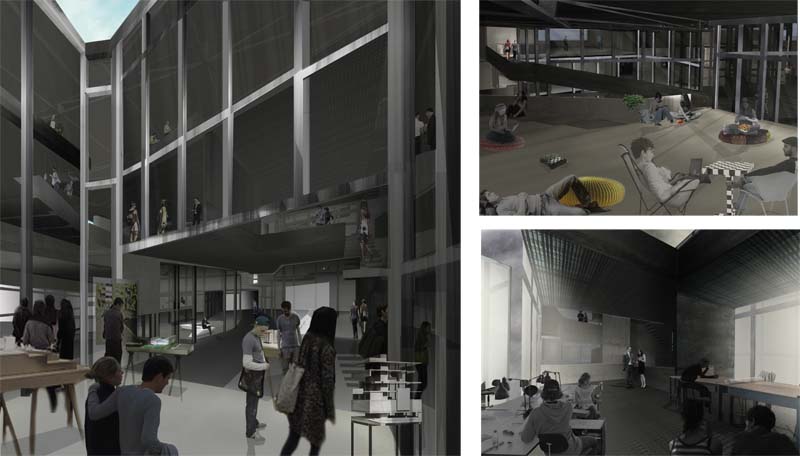

The subject of our study was the design of an Architecture School, in the city of Ioannina. The site is located in the city center, so it can interact with the public space. Basic morphological elements of the building design, were the ramps and the shell. Regarding to the first one, our aim was the penetration of the movement of the city, into the building, through ramps, which can be regarded as a continuation of the city. Similarly, the second one, following the boundaries of the site, is characterized by a high level of transparency and drilling. The key element of the shell is the three patios, aiming at the optimal communication between the interior and exterior. The management of the building space was based on the diffusion of its function, pursuing the relationship of students and teachers, as well as enhancing the movement in the corridors, as additional workplaces.
Supervisor: Paniyiris Costis
Reference Number: 551




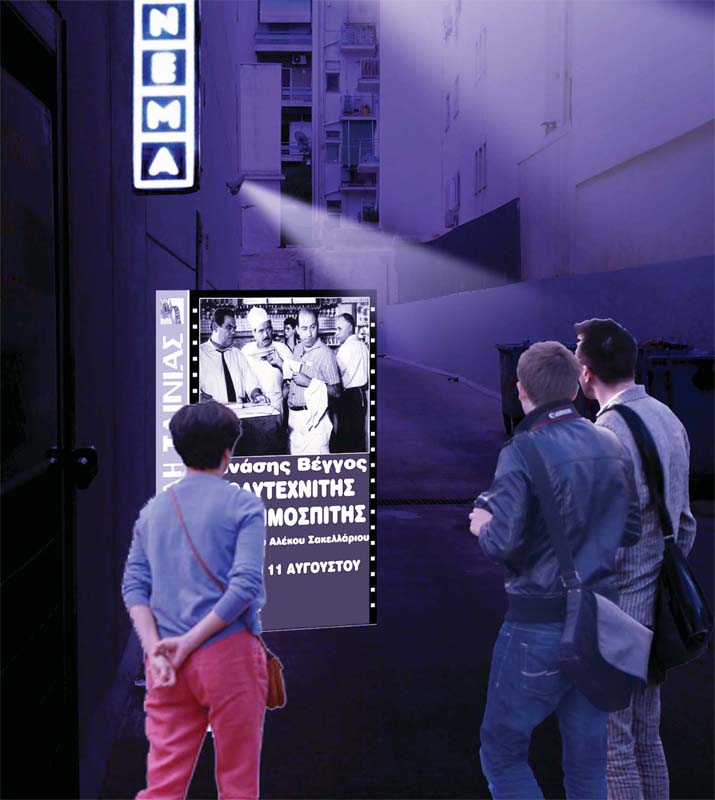





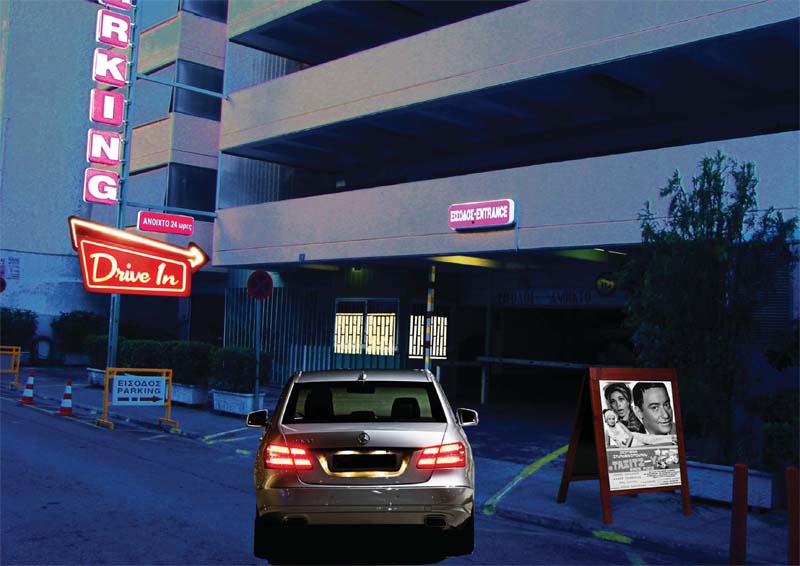

According to Foucault, heterotopias are real and organized spaces, places of otherness, which are simultaneously physical and mental. These places are part of the urban tissue, “a sort of realized utopia, in which all real spatial patterns, and all the other spatial patterns that exist inside society, are simultaneously represented, questioned and reversed”. Spaces that are not just “other places”, but “an-other” way to think spatial.
Thinking spatial with “an-other” from the standard way, we interpret already existing spaces and we try to transform them into places with purpose and aesthetic/experiential potential, through an alternative use. We attempt to see the cinema projection inside the urban space as an “urban performance”, which re-composes the symbolic meanings of space. What will happen if, in spaces of the everyday life, that are symbolically loaded because of their past, we create a reversal that will result in the creation of an heterotopic space? That is the main question trying to be answered with this project thesis.
The development of open air cinema in Athens has always been connected with the formation and the development of the new city. The extension of Athens from the centre to the periphery caused a parallel dispersion of the open air projections. The squares of the neighborhoods, as central spots where social interactions happened, became the new places for open air projections. Turning towards a new example nowadays, an “urban experiment” is proposed, with the emergence of the open air cinemas of the city again, but this time redefining the meaning of projections in space. Three hypothetical scenarios are selected and analyzed. Three spaces, with different program of uses each one, but with a common past, the one of having been open air cinemas before, are selected to become new heterotopias.
Supervisor: Paniyiris Costis
Reference Number: 555

